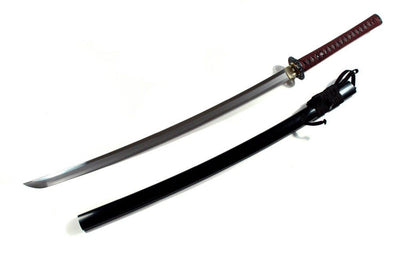

This line has a strong influence on the appearance and character of the sword. The shinogi is the dividing line between the oblique portion that transforms the blade into the flat portion or shinogi-ji of the blade. This is the backline or ridge of the blade that runs from the yokote line to the nakago or tang. The curvature of the kissaki is called the fukura. You have the o-kissaki (large), chu-kissaki (medium) and ko-klssaki (small) lengths which therefore indicate whether the point is large or small.

The size of the kissaki varies per period. This is a clear geometric line that separates the fan-shaped part of the tip from the blade. This can look different and is often separated from the rest of the blade with a yokote line. The point or point area on a Japanese sword is called the kissaki. On this picture you can clearly find all parts of the samurai sword. The blade itself is often complex and has various functions. Every detail has been clearly thought through and often lags behind what you would initially expect. The samurai sword is an efficient deadly weapon but also a work of art in itself. The katana has tsuba to protect the hands and with a long handle or handle that you could hold with two hands.ĭuring the kamakura period, the katana or samurai sword became well known, and this was closely related to the way the samurai warriors waged war. These blades had an elegant curve and had a sharp edge on one side. The blades of the samurai swords from feudal Japan are known all over the world.


 0 kommentar(er)
0 kommentar(er)
